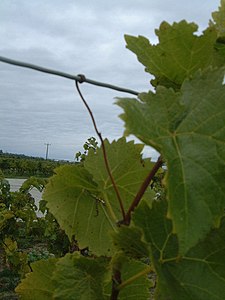This is an old revision of this page, as edited by Sidelight12 (talk | contribs) at 23:55, 3 September 2012. The present address (URL) is a permanent link to this revision, which may differ significantly from the current revision.
Revision as of 23:55, 3 September 2012 by Sidelight12 (talk | contribs)(diff) ← Previous revision | Latest revision (diff) | Newer revision → (diff)| It has been suggested that this article be merged into Plant perception (physiology). (Discuss) Proposed since September 2012. |

In botany, plant intelligence is the ability of plants to sense the environment and adjust their morphology, physiology and phenotype accordingly.
Adaptive behavior
Plants adapt their behaviour in a variety of ways:
- Active foraging for light and nutrients. They do this by changing their architecture, physiology and phenotype.
- Leaves and branches are positioned and oriented in response to light source.
- Ability to detect soil volume and adapt growth accordingly independently of nutrient availability.
- Adaptively defend against herbivores.
References
- Attention: This template ({{cite doi}}) is deprecated. To cite the publication identified by doi:10.1016/j.tplants.2005.07.005, please use {{cite journal}} (if it was published in a bona fide academic journal, otherwise {{cite report}} with
|doi=10.1016/j.tplants.2005.07.005instead. - ^ De Kroon, H. and Hutchings, M.J. (1995) Morphological plasticity in clonal plants: the foraging concept reconsidered. J. Ecol. 83, 143–152
- Attention: This template ({{cite doi}}) is deprecated. To cite the publication identified by doi:10.1023/A:1019640813676, please use {{cite journal}} (if it was published in a bona fide academic journal, otherwise {{cite report}} with
|doi=10.1023/A:1019640813676instead. - Attention: This template ({{cite doi}}) is deprecated. To cite the publication identified by doi:10.1016/S0065-2504(08)60215-9, please use {{cite journal}} (if it was published in a bona fide academic journal, otherwise {{cite report}} with
|doi=10.1016/S0065-2504(08)60215-9instead. - Attention: This template ({{cite doi}}) is deprecated. To cite the publication identified by doi:10.1126/science.199.4331.888, please use {{cite journal}} (if it was published in a bona fide academic journal, otherwise {{cite report}} with
|doi=10.1126/science.199.4331.888instead. - Attention: This template ({{cite doi}}) is deprecated. To cite the publication identified by doi:10.2307/1938905, please use {{cite journal}} (if it was published in a bona fide academic journal, otherwise {{cite report}} with
|doi=10.2307/1938905instead. - Attention: This template ({{cite jstor}}) is deprecated. To cite the publication identified by jstor:2389968, please use {{cite journal}} with
|jstor=2389968instead. - Attention: This template ({{cite doi}}) is deprecated. To cite the publication identified by doi:10.1016/S0065-2504(08)60032-X, please use {{cite journal}} (if it was published in a bona fide academic journal, otherwise {{cite report}} with
|doi=10.1016/S0065-2504(08)60032-Xinstead.